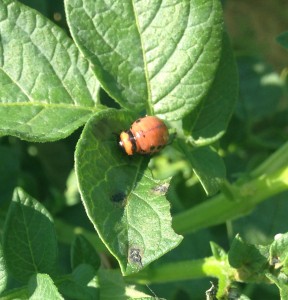Tuesday marked my last day as an intern at Cornell University’s Long Island Horticultural Research and Extension Center. This internship proved to be both enjoyable and educational. I was introduced to the fundaments of scouting, interviewing, research and agriculture in general. This phenomenal experience could not have been possible without the support and guidance of Professor Bjorkmann at the Geneva research station and the Vegetable Extension specialist at LIHREC, Sandy Menasha. As a result of this internship I feel more secure in my decision to continue to pursue a degree in Agricultural Sciences, and I am eager to use my new knowledge in all my future endeavors.




















